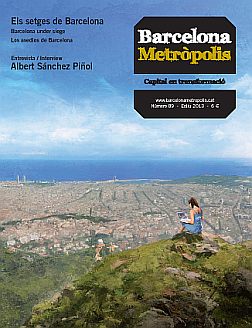The project that lost out on 11 September 1714, the road to modernity that could not be, is now, in the 21st century, the great project of the future. The world is a network and technology favours it.
What is the best way of organising a territory politically? Through a kind of centralised pyramid, with a single and very strong capital, a radial structure, seeking maximum homogeneity and uniformity? Or through a network with multiple capitals, with node-type structures, harnessing diversity through formulas adapted to political, historical and cultural heterogeneities? I would say that right now, with one eye on the future, the second formula seems infinitely more modern and more practical, although the first one also has its defenders, who act upon it. However the logic of the future world, in terms of politics and technology, culture and the economy, would seem to be network-focused.
From the Internet to the European Union, networked constructions seem to be more effective and more adapted to reality than the pyramid models.
Three hundred years ago, when Barcelona was besieged by Franco-Castilian troops, many things clashed around the city walls. Two dynasties faced off, although all that is somewhat ancient now. It was also a head-on clash of two blocs of international alliances, which is not so ancient now. It was not strictly two territories at loggerheads: there were pro-Bourbons in Catalonia and there were pro-Habsburgs in Castile and Aragon, for example, as Ernest Lluch documented so well. All of them mixed together, albeit rather unevenly, between the two ancient Hispanic crowns. It was not about modernity versus nostalgia: there were nostalgic reactionaries on both sides, as there were also innovative visionaries on both sides.
We might say, using modern terminology, that it was a confrontation between two conceptions of how to order political spaces. On the one hand, the French conception, which pointed to the centralised and standardising pyramid, and which was undoubtedly a road to modernity. On the other hand, there was the pro-Habsburg conception which also took an alternative route to modernity: networked territories organised under a single crown, with different laws, institutions and cultures. On the side of the French model, the state. On the other side, there was the Dutch or English route, the evolution of the old participatory institutions and, so to speak, society.
On 11 September 1714, the pyramid bested the network within the walls of Barcelona. It was not a runaway victory. On 12 September, the economic momentum enjoyed by the city and the country over the past few decades had not waned, and the foundations for an agrarian revolution that subsequently yielded the industrial revolution were laid. And on 12 September, via this route, the spirit of the network project was kept alive and would later appear in the landscape of the cultural renaissance, our industrial revolution and subsequent political Catalan nationalism. The network ideal has remained dormant, albeit vanquished. Now it transpires that the project that lost out, the road to modernity that could not be, is the great project of the future, in the 21st century. The world is a network. Europe is being built as a network, almost in the pro-Habsburg style: a large, shared structure with many cultural and legal realities that are maintained. The play between unity and diversity, between great empires and small nations, between the need for the state and the strength of society, is best guaranteed, now and tomorrow, by the network rather than by the pyramid. And technology favours it. The network’s time has come. Here and everywhere. Our great victory of 12 September (three hundred years ago and perhaps in the future).




